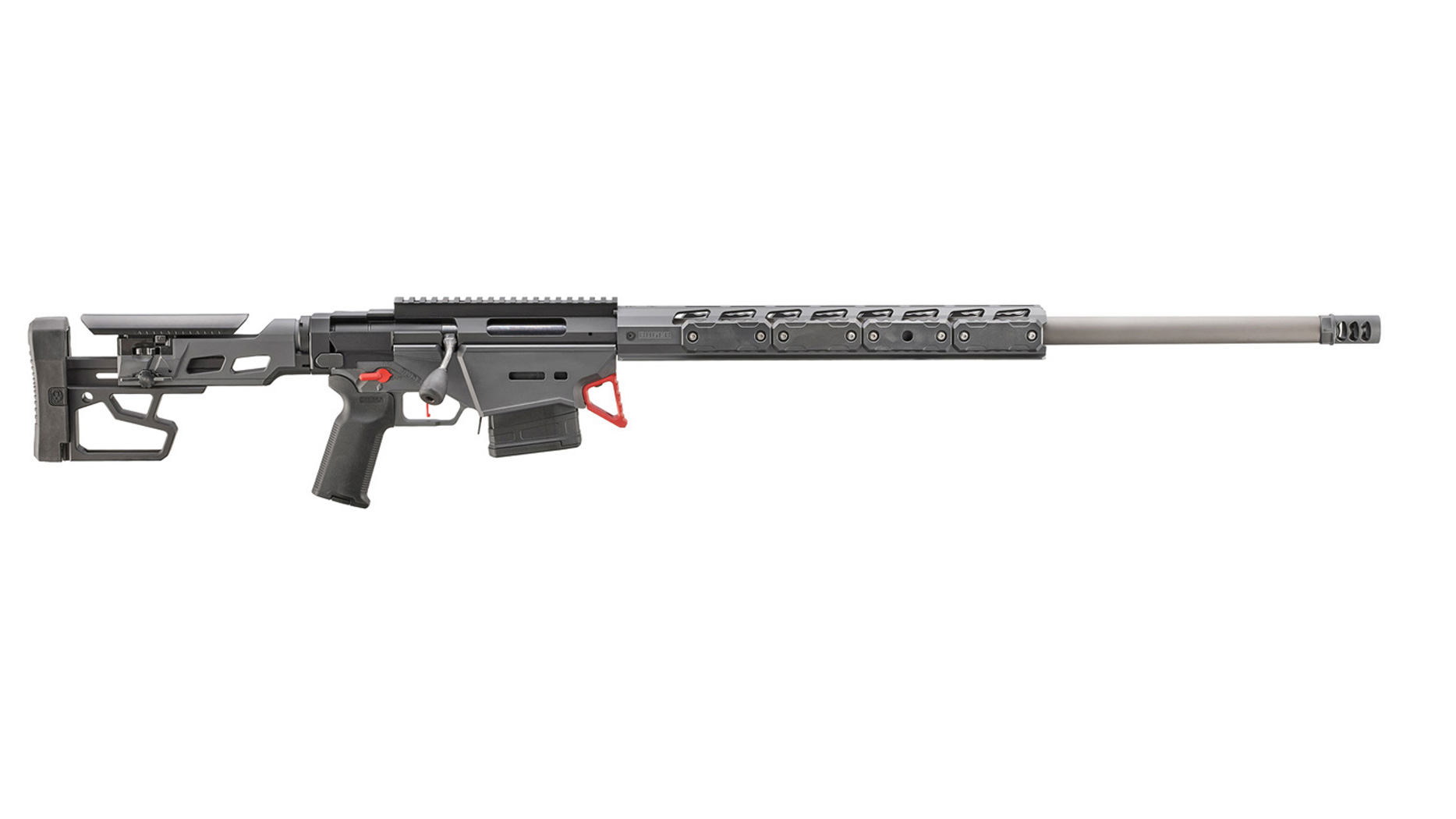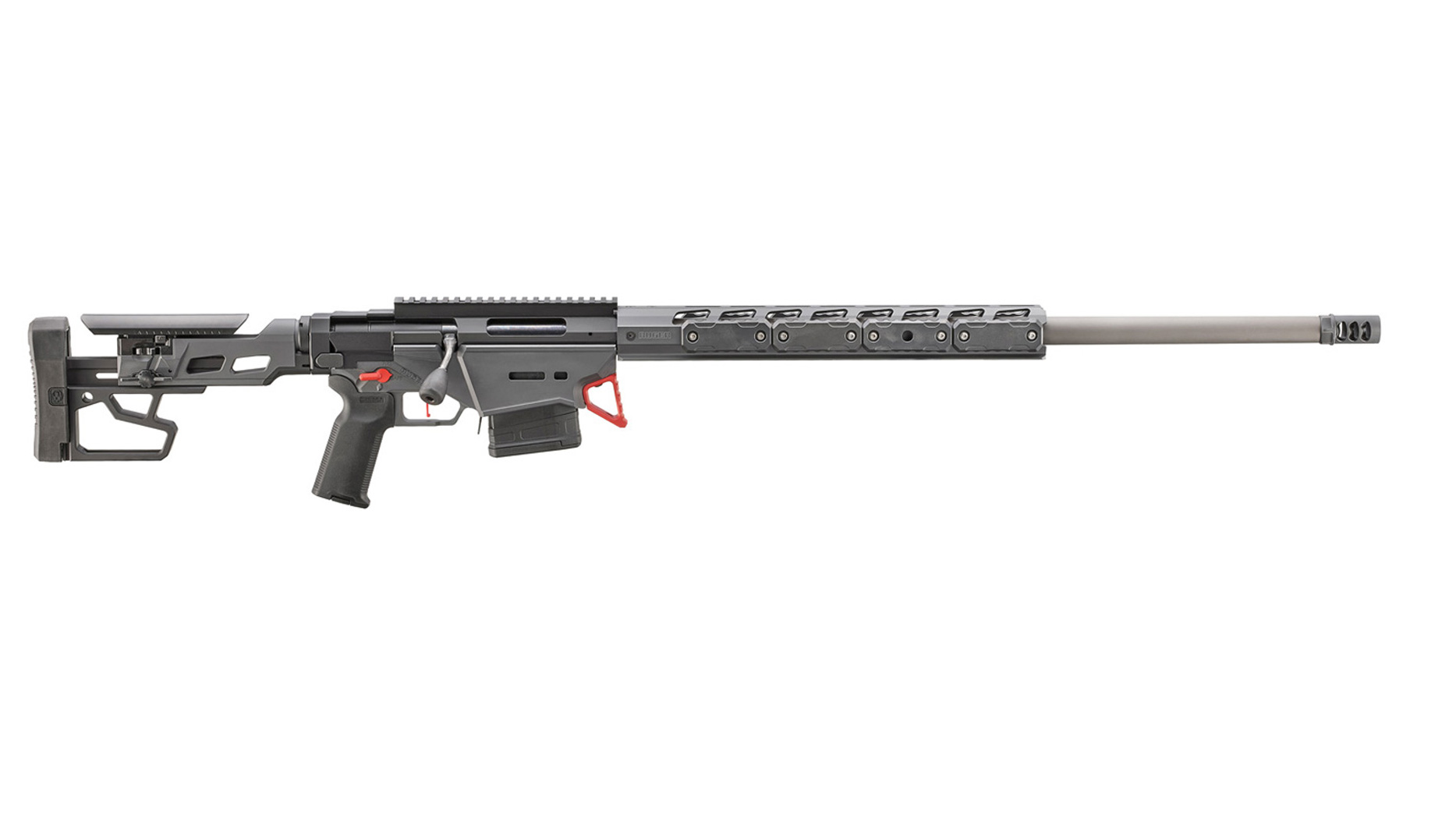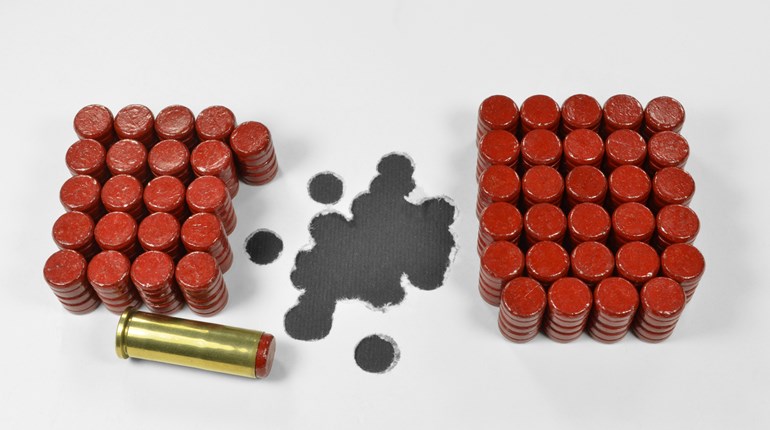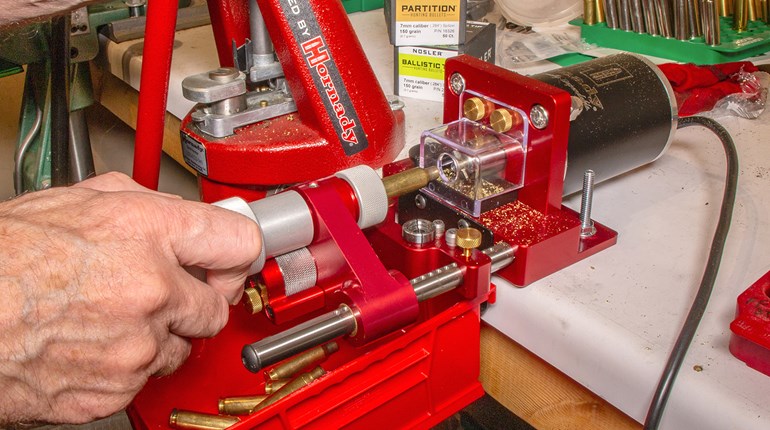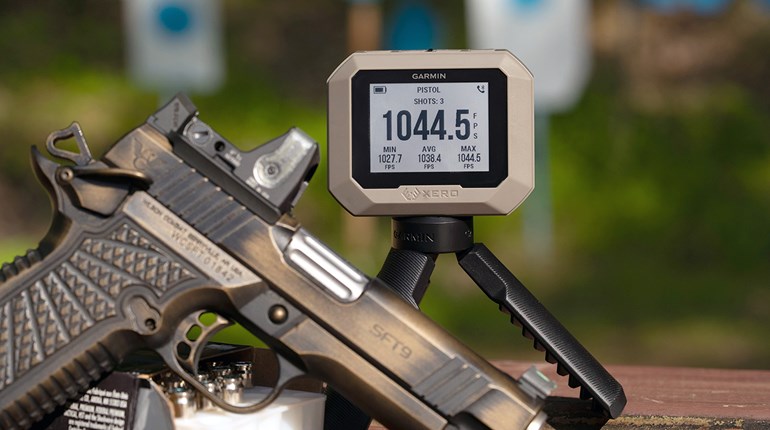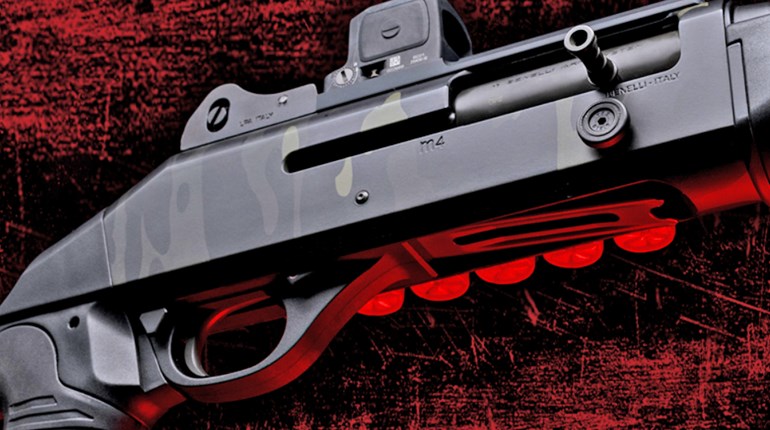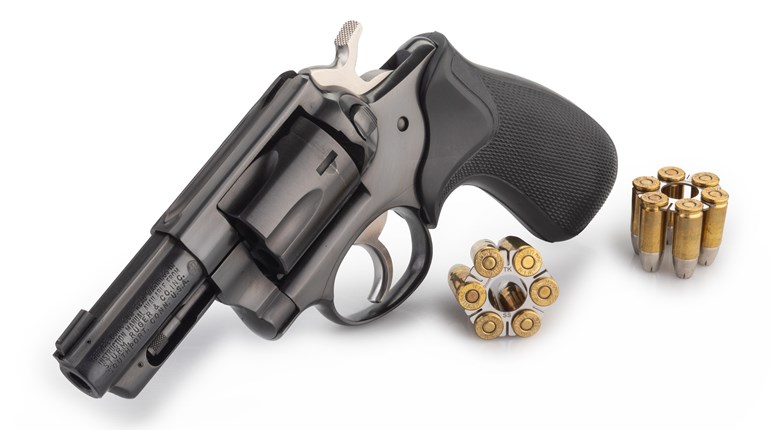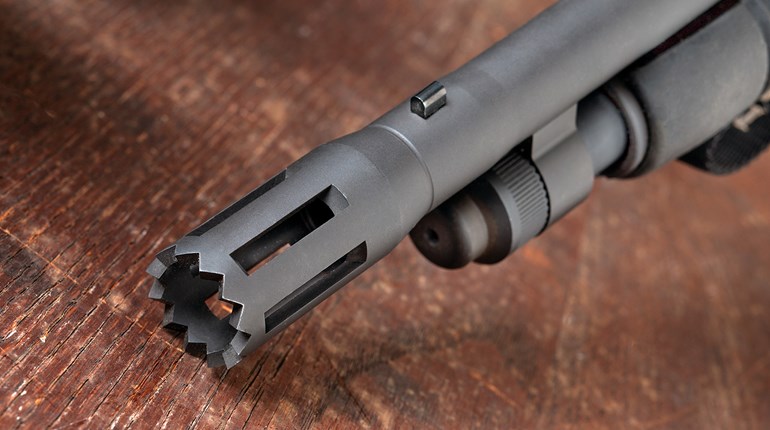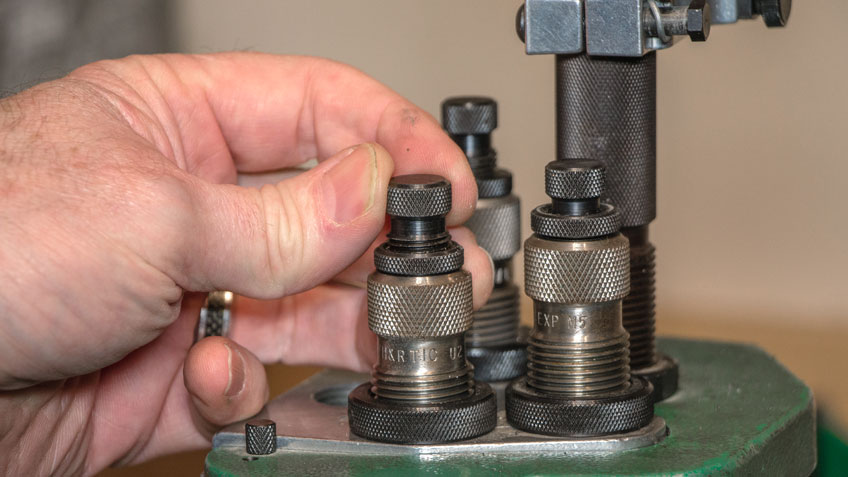
Setting up a progressive press to run properly takes time, effort and quite a bit of brass.
Right now, ammo is as hard to find as unicorn poop. When will the ammunition craze end? If it happens in less than two years, I’ll be astonished, and if it happens in less than four, I’ll be surprised. This has a lot of shooters—new and old—interested in loading their own ammunition in bulk. Of course, components are hard to find, too, but you might be able to wheel and deal and trade for the primers, powder, bullets and brass you need.
Whether you’re a seasoned handloader or are just learning the skill, the best source for information on “how to” is one of the quality loading manuals available from companies like Hornady, Nosler, Sierra and Speer. Still, there are some things you learn from actually loading ammunition that the manuals may not mention. After years of loading lots of ammunition, I’ve learned a thing or two, and here are some of things you might not have considered.
Load Development
Before you embark on any volume-loading project, you want to make sure that the load you’re creating delivers the performance you want. You want to make sure you’ve reached the target velocity and that the precision on target is at the level you demand. You also want to ensure reliability with the guns out of which you will be shooting the ammo. You can do this load workup on a progressive press, but I’ve found it much easier to do on a single-stage unit.
Before you can even begin to work up a load on a progressive press, you must set up the machine. Setting up a single-stage press is much easier and so, too, is making slight adjustments in seating depth, powder charge, primer choice and expander- and sizing-die adjustments.
I’ll determine all these settings on a single-stage press while I’m also establishing the load recipe for whatever cartridge I’m loading. Once I’m getting the performance I want, I’ll transfer my dies to the progressive press and begin setting up the machine.
Machine Setup
It takes some time to set up a progressive press. For example, if you’re loading a pistol cartridge like .357 Mag., you must adjust the sizing die correctly, adjust the neck-expander die correctly, fill up your auto-priming system and make sure it’s working, adjust the auto-powder dispenser and then adjust the seating and crimp. Each of these steps should be done singularly, because it allows you to do two things: First, focus on one adjustment at a time and second, use the least amount of brass possible.
I always start with the sizing die and then adjust the neck-expander die so I can easily place a bullet on the case mouth, so that it will not fall off during press operation. Next, I move to the powder dispenser and confirm with five measured charges that I’m getting the charge weight I need. The bullet seating and crimp functions are next, followed by coordinating the auto-primer feed. Once I feel I have everything adjusted properly, I’ll load five or six rounds and test fire them to make sure I’ve recreated the load exactly like I developed it on the single-stage press.
Brass Allotment
Once you have a progressive press set up for a particular load, you can expect about one in 100 mistakes in the loading process. These are mostly human error and include things like forgetting to press the lever down to prime a case, or maybe inserting a bullet upside down. The point is, if you want to load 500 rounds, make sure you have enough brass on hand to compensate for mistakes you might make.
Additionally, anytime you’re setting up a progressive press, you’ll need some brass to run through the setup procedure to make sure all of your die and press adjustments are correct. I typically set aside 20 cases for this process. It may not take that many, but I’ve found that it usually takes at least half that many to get everything just right.
So, for example, if I want to load 500 rounds that involve a new setup on a progressive press, I’ll need at least 525 cases to get there. Also, before even starting on the progressive press, you’ll need at least another 25 cases to work with on the single-stage press while you’re refining your load and checking it for velocity, accuracy and reliability.
Safety
I always wear safety glasses when loading ammunition. I’ve never had an incident, but I see the potential for it all the time. Sometimes primers get loose and can fall into the mechanics of the machine, offering the opportunity for detonation. I’ve also heard of primers detonating in primer tubes. These occurrences are obviously rare, but so, too, are incidents when guns blow up. I’ve had several guns blow up due to ammunition issues, so I’m thinking it’s only a matter of time until I have an incident on a loading bench. Humans have the ability to screw up just about anything.
I also learned early on to box and label my handloads as soon as I’m through, and sometimes even during the process. You might think you’re going to come back tomorrow or next week and load more of the same, and you might actually show up much later to do that. Will you remember what you loaded? Will you remember the exact recipe? Write it down as you go.
Also, don’t leave powder and primers in your machine. If you finish a loading session, empty the primer and powder supply to circumvent potential disaster. If you know you’re coming back shortly, at least label the powder in the dispenser and the primers in the feed so you know for sure what you’re working with. When you’re finished, always clean up completely.
Volume loading is not that complicated and is quite safe. The key to success is to do the preparation beforehand and to observe safety protocols. Both will save you time and components in the long run. Our current ammunition situation is frustrating, but so, too, is running out of brass when you still have 25 bullets to load, or having to dump a hopper of powder or a tube of primers because you didn’t label them and don’t know what they are.






